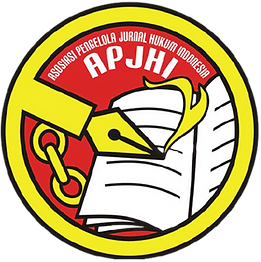IMPLEMENTASI PROGRAM ASIMILASI PADA SARANA ASIMILASI DAN EDUKASI (SAE) BERDASARKAN RISK AND NEED ASESEEMENT DI LEMBAGA PEMASYARAKATAN KLAS IIB SELONG
Abstract
The assimilation program at prisons in the midst of a pandemic is not running optimally. Many problems were encountered in the midst of the Minister's decision to carry out the home assimilation program. Prisoners who are supposed to undergo an integration program, one of which is assimilation, do not fully receive guidance outside the Institution. Therefore the existence of SAE needs to be maximized in the implementation of the assimilation program. In this study, researchers were interested in using a descriptive qualitative approach. Descriptive research is carried out by describing an event that is happening at this time by focusing more on actual problems according to the events at the time the research was carried out. Selong prison has effective assimilation and education facilities for inmates for inmates to channel the skills and talents of inmates in the fields available in the program. With a platform for the activities of various kinds of program clusters provided, this activity can become an opportunity to socialize to the community regarding the prisoner development program and minimize the social stigma of ex-convicts. Correctional officers who are involved in the assimilation program at SAE should be able to provide serious and measurable guidance to convicts who take part in the program so that they can carry out the program with enthusiasm and responsibility and conduct outreach to inmates both directly and online regarding the program being implemented.
Downloads
Published
How to Cite
Issue
Section
License
Authors who publish with this journal agree to the following terms:- Authors retain copyright and grant the journal right of first publication with the work simultaneously licensed under a Creative Commons Attribution License that allows others to share the work with an acknowledgement of the work's authorship and initial publication in this journal.
- Authors are able to enter into separate, additional contractual arrangements for the non-exclusive distribution of the journal's published version of the work (e.g., post it to an institutional repository or publish it in a book), with an acknowledgement of its initial publication in this journal.
- Authors are permitted and encouraged to post their work online (e.g., in institutional repositories or on their website) prior to and during the submission process, as it can lead to productive exchanges, as well as earlier and greater citation of published work (See The Effect of Open Access).
Authors who publish with this journal agree to the following terms:
- Authors retain copyright and grant the journal right of first publication, with the work [SPECIFY PERIOD OF TIME] after publication simultaneously licensed under aCreative Commons Attribution License that allows others to share the work with an acknowledgement of the work's authorship and initial publication in this journal.
- Authors are able to enter into separate, additional contractual arrangements for the non-exclusive distribution of the journal's published version of the work (e.g., post it to an institutional repository or publish it in a book), with an acknowledgement of its initial publication in this journal.
- Authors are permitted and encouraged to post their work online (e.g., in institutional repositories or on their website) prior to and during the submission process, as it can lead to productive exchanges, as well as earlier and greater citation of published work (See The Effect of Open Access).












